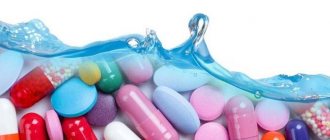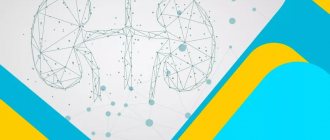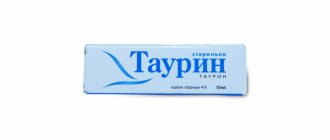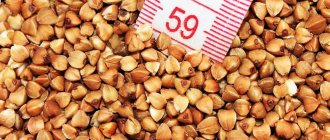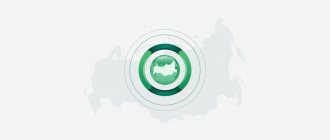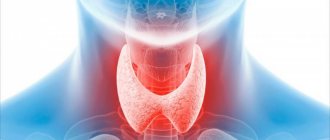- Dosages used
- Clostilbegit for infertility
Clostilbegit (clomiphene) is one of the classes of selective estrogen receptor modulators (SERMs). The mechanism of action of Clostilbegit is based on a selective effect on estrogen receptors of the hypothalamic-pituitary system, due to which the receptors are blocked for estrogens and, through a feedback mechanism, the secretion of gonadotropins (follicle-stimulating and luteinizing hormones) is increased, which, acting on the follicles in the ovaries, causes stimulation of their function ( stimulation of ovulation). There are indications that blockade of estrogen receptors in the hypothalamus leads to increased production of GnRH, thereby providing a higher level of regulation of the hypothalamic-pituitary-ovarian system.
Clostilbegit has certain pharmacokinetic features: good absorption when taken orally, long (up to 7 days) half-life due to active binding to blood plasma proteins.
Clostilbegit: mechanism of action
Clostilbegit belongs to the group of non-steroidal antiestrogenic drugs that stimulate ovulation.
The mechanism of action of this drug is based on the activation of the synthesis of gonadotropic hormones in the pituitary gland: FSH (follicle-stimulating), LH (luteinizing) and prolactin. The effect of clostilbegit directly depends on its dosage: the higher it is, the more the production of gonadotropins is suppressed, and vice versa, small doses of the drug enhance the formation of tropic hormones and promote ovulation. In addition, it is worth noting that the mechanism of action of clostilbegit is influenced by the concentration of estrogen in the blood: at low levels of estrogen it causes a moderate estrogenic effect, and at elevated levels it leads to an anti-estrogenic effect. However, it does not affect progestogen and androgenic activity in any way.
Nowadays, the drug is widely used in gynecology as part of infertility therapy, because immediately after its absorption, the processes of follicle maturation are activated and accelerated. Clostilbegit is available in the form of flat grayish-white tablets. Its active ingredient is clomiphene citrate, in the amount of 50 mg per tablet. It is very quickly absorbed from the digestive tract after oral administration. The breakdown of the drug occurs in the liver, and the metabolites are completely excreted along with bile within 10-14 days.
Clostilbegit is often prescribed during IVF (in vitro fertilization) to stimulate the formation of eggs. There are cases when specialists do not wait for the follicle to rupture, but immediately puncture mature female reproductive cells for the next stage of IVF.
Hormone replacement therapy for men with age-related androgen deficiency
Specialization: urology, andrology
Age-related androgen deficiency syndrome in men is a biochemical imbalance that occurs in adulthood due to insufficiency of androgens in the blood serum, often accompanied by a decrease in the body's sensitivity to androgens. As a rule, this leads to a significant deterioration in the quality of life and adversely affects the functions of almost all body systems. Naturally, the issues of androgen deficiency therapy are of great interest, since it poses a difficult task for the clinician: to choose from a wide arsenal of methods and drugs of hormonal therapy the most optimal one, combining quality, efficiency, and ease of use.
Currently, urologists and andrologists most often use testosterone replacement therapy. This method allows you to solve a number of problems: reduce the symptoms of age-related androgen deficiency by increasing libido and overall sexual satisfaction, reduce the severity or completely eliminate vegetative-vascular and mental disorders. In addition, if testosterone replacement therapy is used for more than 1 year, patients experience an increase in bone mass density, a decrease in the severity of visceral obesity, and an increase in muscle mass. Also, after a long course of treatment, laboratory parameters are normalized: there is an increase in hemoglobin levels or the number of red blood cells, a decrease in the level of VLDL (very low density lipoproteins) and LDL (low density lipoproteins) with an unchanged level of HDL (high density lipoproteins). Many authors believe that this effect can be achieved by restoring the concentration of testosterone in the blood to normal levels (10–35 nmol/l). It should also be taken into account that *17α-alkylated testosterone preparations fluoxymesterolone and methyltestosterone have pronounced hepatotoxicity, having a toxic and carcinogenic effect on the liver, and also negatively affect the lipid spectrum of the blood (a sharp increase in the level of atherogenic and a decrease in the level of antiatherogenic lipoproteins). Therefore, the use of these testosterone derivatives in clinical practice was discontinued. Currently, testosterone undecanoate (Andriol) is the preferred oral drug. This testosterone ester does not undergo primary hepatic metabolism, as it is absorbed into the lymphatic system, bypassing the liver. After hydrolysis of testosterone undecanoate in the lymphatic system, testosterone enters the systemic circulation, which has a therapeutic effect both on its own and through its main metabolites - dihydrotestosterone (DHT) and estradiol, which determine the full spectrum of androgenic activity of testosterone. Thus, testosterone undecanoate retains its activity when administered orally. At the same time, bypassing the portal vein system and passing through the liver, testosterone undecanoate does not have a hepatotoxic or hepatocarcinogenic effect. The half-life of the drug from plasma is 3–4 hours. In connection with this, the dosage regimen for testosterone undecanoate is 2 times a day, which is not always convenient for patients. Based on our own experience, we believe that Andriol is a fairly mild drug and helps only in cases of initial and minimal manifestations of age-related androgen deficiency.
Intramuscular injections of long-acting testosterone esters are also a widely used method of replacement therapy in men with hypogonadism. The two most well-known testosterone esters, testosterone cypionate and testosterone enanthate, have similar pharmacokinetics. When these drugs are administered intramuscularly, a depot is created from which the drug is released into the bloodstream. During the first 2–3 days after administration, testosterone levels rise to supraphysiological levels, and then slowly decrease over the next 2 weeks to subnormal values. The positive side of these drugs is the duration of the therapeutic effect. Nevertheless, sudden changes in testosterone levels, often felt by the patient himself in the form of increases and decreases in libido, general well-being, and emotional status, are undesirable qualities of these drugs. In this regard, great hopes are placed on the new drug Nebido (Schering), the pharmacokinetics of which are significantly different from other testosterone esters. Nebido is testosterone undecanoate and is a non-peak drug. Over the past two decades, much attention has been paid to research into the benefits of transdermal use of testosterone preparations. Scrotal patches are effective and some patients find them the most convenient treatment option. Skin patches are most well accepted by patients and provide effective serum testosterone levels. However, there are some differences between the two types of patches regarding their allergenic potential: skin patches have a much higher incidence of allergic reactions and skin irritation than scrotal patches. Testosterone gel has all the benefits of patches and does not cause skin reactions. Its only drawback is the possibility of contact of the gel with a partner and the insufficient number of long-term studies on its use. The transdermal route of testosterone administration avoids its primary metabolism in the liver and inactivation, as occurs with the use of oral androgen drugs, and also allows it to simulate the circadian rhythms of release of physiological unmodified testosterone and its natural metabolites, estradiol and DHT. In addition, therapy using patches and gel can be easily interrupted if necessary. The positive aspects of this treatment method also include the low risk of drug dependence. The European drug 5-α-dihydrotestosterone gel (DHT), although found to be effective, is unknown whether the isolated use of a non-aromatized androgen, such as DHT, has the same effect as testosterone, due to the fact that testosterone metabolites include estradiol. According to many authors, the use of the drug is not recommended, since DHT, due to the inability to convert into estradiol, does not have the full range of therapeutic properties of testosterone (for example, effects on bone tissue and the cardiovascular system). Some of the replacement therapy drugs, such as testosterone undecanoate, DHT gel and scrotal patches, cause a significant increase in serum DHT concentrations. DHT is known as the main androgen of the prostate, and there has been much discussion regarding its ability to cause prostate disease. However, despite these assumptions, in the last 10 years there has been no evidence of an increase in the incidence of prostate pathology when prescribing DHT drugs.
Thus, there are many drugs for androgen replacement therapy, but they all have certain side effects and also have an inhibitory effect on spermatogenesis. Recently, more and more studies have appeared demonstrating the secondary nature of age-related androgen deficiency. According to WHO materials, data were obtained on the preservation of the secreting function of Leydig cells in elderly men, which allowed scientists to propose a fundamentally new approach to the treatment of age-related androgen deficiency, based on stimulation of the synthesis of endogenous testosterone. However, we should not forget that along with absolute contraindications for androgen replacement therapy (breast and prostate cancer), there are also additional ones (benign prostatic hyperplasia with severe obstruction, prolactinoma, polycythemia). Relative contraindications include sleep disorders in the form of apnea, obstructive pulmonary diseases, and heavy smoking. Side effects of androgens include increased sleep apnea, polycythemia, gynecomastia, priapism, fluid retention, increased blood pressure, edema, increased prostate size, and inhibition of spermatogenesis. That is, today there are methods for treating age-related androgen deficiency, which can be divided into two groups, fundamentally different in their mechanism of action: replacement therapy with exogenous androgen drugs; therapy that stimulates the synthesis of endogenous testosterone. Thus, we can say that there is no optimal treatment for age-related androgen deficiency in men. And the choice of drug should be approached strictly individually, taking into account the patient’s age, body mass index, the need to preserve spermatogenesis, hematocrit values and concomitant diseases.
Bibliography:
- Kalinchenko S. Yu. Age-related androgen deficiency in men // Medical newspaper. – June 28, 2002 – No. 49.
- Cunningham GR Management of male aging: which testosterone replacement therapy should be used? The Aging Male 2000;3:203-209.
- Jordan WP Allergy and topical irritation associated with transdermal testosteron administration: a comparison of scrotal and nonscrotal transdermal systems. Am J Contact Dermat 1997;8:108-13.
- Yu Z, Gupta SK, Hwang SS, et al. Testosterone pharmakokinetics after application of an investigational transdermal system in hypogonadal men. J Clin Pharmacol 1997;37:1139-45.
- Gorpinchenko I. I., Miroshnikov Ya. O. Erectile dysfunction. – Lviv: Medicine of the World, 2003. – 80 p.
- Duncan C. Gould Hypoandrogen-metabolic (HAM) syndrome: an important men's health issue//IMNG.– 2007. – V.2. – P. 174–178.
- Shabsigh R. Testosterone therapy in erectile dysfunction and hypogonadism//J. Sex. Med. – 2005. – V.2. – P. 785–792.
- Traish AM, Kim N. Weapons of penile smooth muscle destruction: androgen deficiency promotes accumulation of adiposities in the corpus cavernosum // Aging male. – 2005. – V.8. – P. 141–146.
The material was published in the specialized publication for doctors ProTest, issue 5, May 2021. When using materials, a link to the journal is required.
Clostilbegit: indications and contraindications
The main purpose of taking clostilbegit is to stimulate ovulation, which is carried out in the following situations:
- Anovulatory cycles;
- Amenorrhea of various origins or oligomenorrhea;
- Polycystic ovary syndrome (PCOS);
- Pituitary tumors causing galactorrhea;
- Prolonged postpartum amenorrhea and galactorrhea caused by various pathological processes, for example, Chiari-Frommel syndrome;
- Androgen deficiency.
Clostilbegit is prescribed not only to women, but also to men, since this drug has a positive effect on sperm quality, especially with oligospermia (reduced number of sperm in the ejaculate).
But this medication can cause adverse reactions from other organs and systems, so it is contraindicated in cases of renal and liver failure, neoplasms of the reproductive system and pituitary gland, ovarian cysts, kidney and liver failure. It should not be used in cases of changes in the functionality of the adrenal glands and thyroid gland, hypofunction of the pituitary gland, uterine bleeding of unknown etiology, visual and metabolic disorders. It is also not recommended to use clostilbegit during pregnancy and lactation, in case of hypersensitivity to the components of the drug.
Clostilbegit: method of application and dosage
Clostilbegit is produced in the form of tablets, so it is intended only for oral administration. It is advisable to take it at the same time; the treatment regimen and dosage are determined by the attending physician depending on the characteristics of the patient and the reaction of the genital organs to the drug.
If the patient is diagnosed with infertility and her menstrual cycle is regular, then clostilbegit is prescribed on the 5th day of the cycle. With amenorrhea, the day of the first dose is not of fundamental importance.
There are 2 main schemes for using clostilbegit.
As a rule, patients are initially prescribed 1 regimen: 50 mg once a day for 5 days. During therapy, it is necessary to monitor the ovarian response and conduct laboratory tests. The result of this treatment is ovulation on days 11-15 of the menstrual cycle.
If the desired effect from the first regimen does not occur, then a second regimen is prescribed: for the next cycle, the woman must immediately take 2 tablets of clostilbegit (100 mg) once a day for 5 days. If such a dosage helps achieve the desired ovulation and pregnancy, then the drug is immediately discontinued. But if the therapy does not bring results, then it is worth taking a break for 3 months and then repeating treatment according to scheme 2. The basic rule of any course is that the total dose for the entire period is no more than 750 mg.
To avoid ovarian hyperstimulation in PCOS, clostilbegit should be taken no more than 50 mg once a day. To treat complications from long-term use of oral contraceptives, in particular amenorrhea, you should start using one regimen. In most cases, patients experience results immediately after the first attempt. The therapeutic course of clostilbegit in men takes longer - approximately 6 weeks, while 50 mg of the drug must be taken 1-2 times a day.
Compound
| Pills | 1 table |
| active substance: clomiphene citrate | 50 mg |
| excipients: gelatin - 2 mg; magnesium stearate - 2 mg; stearic acid - 2 mg; talc - 5 mg; potato starch - 39 mg; lactose monohydrate - 100 mg |
- Full trade name of the drug: Clostilbegit, international nonproprietary name: clomiphene.
- Dispensed by prescription.
- Release form: tablets 50 mg No. 10 in a blister of aluminum foil or a dark glass bottle. Each package contains instructions for use.
- Manufacturer: ZAT Pharmaceutical Plant EGIS.
- Active ingredient: clomiphene citrate.
Clostilbegit: negative reactions
Clostilbegit is a non-steroidal drug that can cause various adverse reactions from different body systems. Most often, it leads to the development of dyspeptic symptoms (nausea, vomiting, loss of appetite, weakness, changes in stool, flatulence, and others), but can contribute to the appearance of pain in the abdominal area. Some patients complain of dizziness, headaches, depression, irritability and insomnia, and allergic reactions. Visual dysfunction cannot be ruled out: double vision, photophobia, disturbances in light perception, so you should not drive vehicles or work with precise and dangerous machinery after taking the drug.
Clostilbegit can also negatively affect the state of the hormonal system, causing disruption of the menstrual cycle, uterine bleeding, enlarged ovaries, and pain in the mammary glands.
In addition, it contributes to the development of endometriosis, the progression of uterine fibroids and increases the likelihood of multiple or ectopic pregnancy.
The literature describes cases of clostilbegit overdose, so patients are not recommended to change the treatment regimen on their own, so as not to cause abdominal pain, nausea, vomiting, lower back discomfort, visual disturbances and ovarian hyperstimulation (excessive enlargement). There is no specific therapy for such conditions; specialists take measures to eliminate unfavorable symptoms and promote rapid elimination of the drug.
Clostilbegit: features of administration
Before you start taking clostilbegit, you should undergo a full medical examination and find out the etiology of infertility. Therapy with the drug is possible with normal test results, calm ovaries during palpation, adequate functioning of the adrenal glands and thyroid gland, and sufficient concentrations of gonadotropin in the blood and urine.
While taking clostilbegit, the ovaries may become enlarged (up to 8 cm) and cysts may appear in them. In this case, the drug is discontinued until the body is completely restored, and then its dosage is reduced and the duration of the course is reduced. But sometimes clostilbegit is replaced with analogues when such complications occur.
Throughout the entire period of treatment, the doctor monitors the condition of the vagina, the reaction of the ovaries, checks their functionality, he can detect the phenomenon of the “pupil” - an increase in the amount of cervical mucus before ovulation.
In some patients, it is difficult to determine ovulation even after stimulation with clostilbegit, and the possibility of the formation of an inferior corpus luteum cannot be ruled out. Therefore, after the desired pregnancy occurs, women are recommended to use progesterone preparations.
Clostilbegit is a popular remedy that is prescribed in many specialized institutions, including the IVF Center clinic in Smolensk. This is due to the rapid positive effect of taking it immediately after the first course of therapy.
Clostilbegit for infertility
Clostilbegit in the treatment of infertility is an inexpensive, highly effective first-line drug for the treatment of normogonadotropic anovulation. An important positive aspect of its use is the possibility of oral administration. However, the use of this drug is associated with a certain risk of complications and should be carried out only by a doctor, if possible, using ultrasound monitoring of folliculogenesis and endometrial development. In the vast majority of cases, the negative anti-estrogenic effect of Clostilbegit on endometrial thickness can be corrected by the use of estrogen drugs after the end of taking Clostilbegit in the planned fertile cycle.
